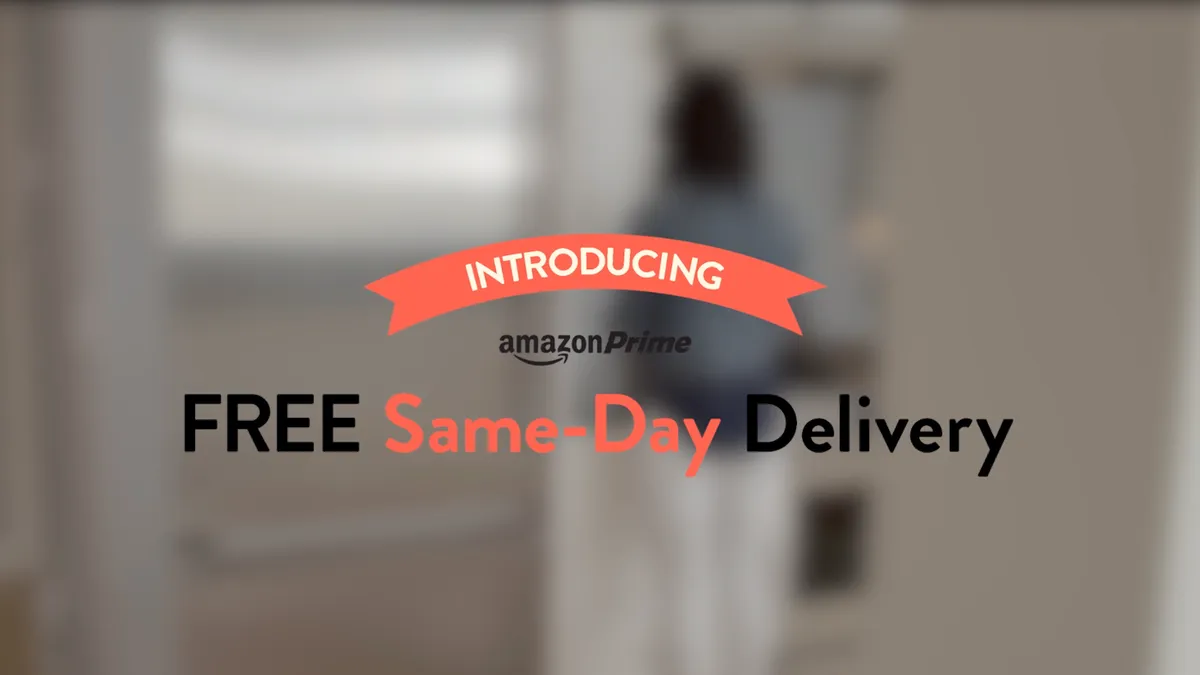Dive Brief:
-
Amazon on Tuesday said it's offering discounted Prime memberships to customers participating in government assistance programs including Temporary Assistance for Needy Families (TANF), Supplemental Nutrition Assistance Program (SNAP), and the Women, Infants, and Children Nutrition Program (WIC).
-
Those customers will be able to join Prime, (which otherwise costs $99 annually or $10.99 per month), for $5.99 per month, which comes to $71.88 per year, according to a company press release. Unlike those enjoying the regular Prime membership, those with a discounted membership have no annual commitment and can cancel any time.
-
Customers must qualify with a valid government Electronic Benefit Transfer (EBT) card, but can begin with a 30-day free trial. Amazon is developing ways to qualify customers who participate in government assistance programs but don’t use EBT cards, according to the statement. For now, those customers opting for the new discounted Prime membership can qualify every 12 months, up to four times, the company said.
Dive Insight:
In his statement on Tuesday, Amazon Prime VP Greg Greeley said the e-commerce giant is interested in making Prime benefits — which include a slew of entertainment services, photo storage, access to private labels and free two-day shipping on many items — more accessible.
“We know when people try Prime they love it because they save time and money with low prices on millions of items, unlimited access to premium videos and music, and fast, convenient delivery,” he said in an email to Retail Dive.
But the move could also be seen as a challenge to Walmart, which has long developed services like check-cashing and money transfers to appeal to their customer base, which is typically older and less wealthy than Amazon’s. In its massive push to boost e-commerce sales, Walmart is gunning for Amazon’s non-Prime customers: the company recently scrapped the membership-based Shipping Pass program, for example, replacing it with free two-day delivery on orders over $35. Keith Anderson, VP of strategy and insight at e-commerce analytics firm Profitero, compares Walmart’s strategy to streaming services that cater to cable television customers who would rather pay ala carte than hefty fees for a slew of channels they don’t want, akin to Amazon's membership and benefits.
But recent moves by Amazon, including this new Prime opportunity for EBT-using customers, suggest that the e-commerce giant isn’t content for Walmart to pick off shoppers who can’t, or won’t, pony up for Prime. Amazon in April announced a new service for people who can’t or choose not to use credit cards or bank accounts. In contrast to increasingly popular prepaid credit cards, Amazon Cash carries no fees, posing a challenge to both Walmart and PayPal. And Amazon didn’t let Walmart’s free shipping play go unanswered, quietly lowering its own free-shipping minimum a few weeks later to $35, just a year after raising it to $50.















